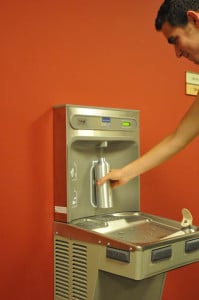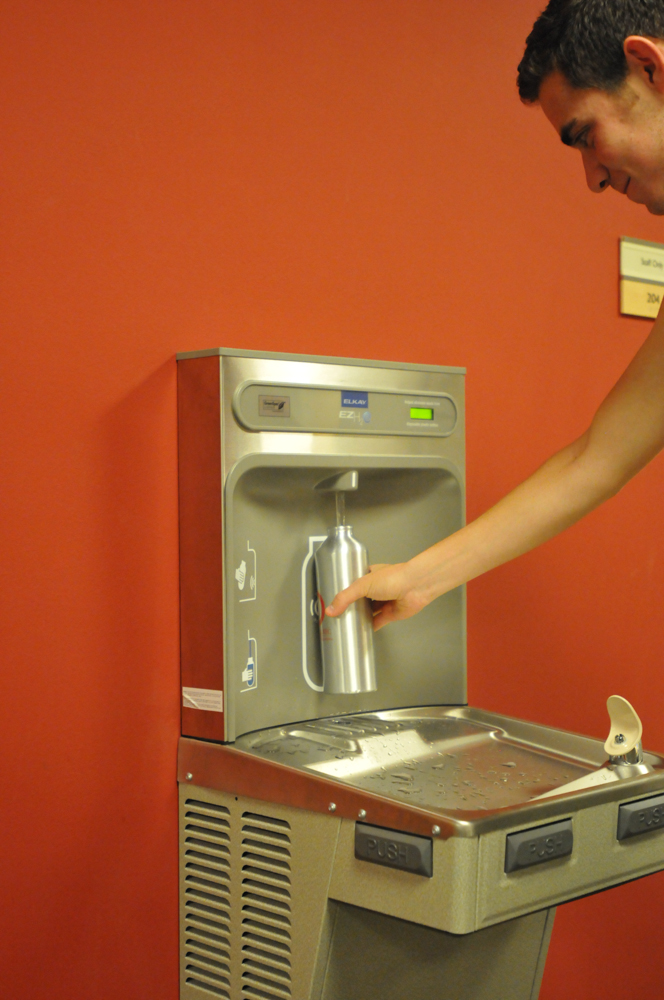
With California’s statewide drought affecting Stanford, efforts to reduce water consumption and increase sustainability have come to the forefront.
The Water Group, a branch of Students for a Sustainable Stanford (SSS), has recently completed two projects and finalized plans for another that will attempt to make Stanford a more sustainable campus.
Water bottle refill station
For the first project, the Water Group partnered with the Graduate Student Council (GSC) to install a water bottle refill station on the second floor of Old Union. There were already several refill stations on campus, but none were in centrally located or heavily trafficked areas.
Both the Water Group and the GSC had come to the conclusion that a refill station had to be established, and they joined efforts to obtain funding from the Green Fund, a funding pool from the Office of Sustainability given to groups on campus for projects promoting sustainability.
“We were planning on applying for a Green Fund last fall to fund the project when we realized that SSS also was intending to apply for a Green Fund for the same idea,” said Susie Choi ‘12 J.D. ‘15, member of the GSC.
“Teaming up with the GSC was a good way to show the administration that there was a broader group of students that wanted this to happen,” said Laura Cussen ‘15, co-leader of the Water Group.
Cussen noted that the refill station includes a counter, allowing the group to track the effect of the station. Installed just two weeks ago, the station had been used 217 times as of Wednesday.
“Old Union, prior to the installation of the water-filling station [which includes a water fountain in the lower half of the unit], had zero water fountains,” Choi said.
If all goes well with the refill station in Old Union, the group hopes to add more of them around campus, particularly in bustling academic buildings.
Ozone cleaning solution
At the beginning of spring quarter, the group began another pilot program to test a more sustainable cleaning solution, installing a small machine in Columbae that converts tap water into an aqueous ozone cleaning solution.
“We wanted to do a different type of project and we ended up finding this product,” said Andrew Jacobs ‘16, co-leader of the Water Group. “The aqueous ozone will kill bacteria because it’s so reactive, but its final end products are water vapor and oxygen gas, so it’s completely sustainable and you don’t have any chemical residue like you have with other chemical cleaners.”
In the long term, the group hopes that they can introduce the machine in other co-ops. Ideally, the ozone cleaning solution would become the primary cleaning tool to be adopted by Residential and Dining Enterprises (R&DE), however the group has not had any conversations with R&DE yet.
Rainwater recycling system
The final project the Water Group has been developing is installing a rainwater recycling system at Synergy, which will act as the primary source of water for the garden on the side of the house.
According to Cussen, the rainwater system was in the making for the past four years. The project was delayed because of various administrative and financial barriers.
“The obstacle was getting all the people at Stanford Housing and all the bureaucracy in line, in addition to obtaining the funding,” Cussen said.
However, despite the postponement of the Water Group’s plans, they hope to install the rainwater system by the end of this academic year.
Ultimately, the group hopes that their three projects – the water bottle refill station, ozone cleaner and rainwater system – will have an impact beyond the water and energy they will conserve.
“We are actually getting things done…and I think the idea that we can set some sort of an example as a student body by using sustainable practices feels so much more gratifying than simply raising awareness,” Cussen said.
Contact Andrew Vogeley at avogeley ‘at’ Stanford ‘dot’ edu.
